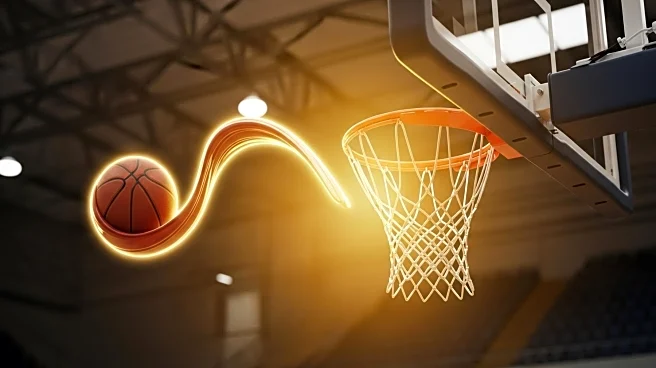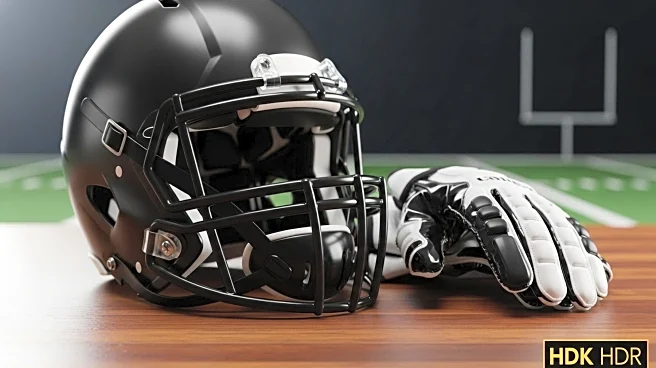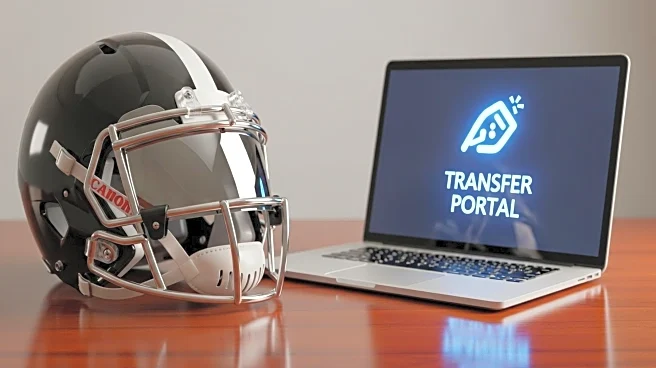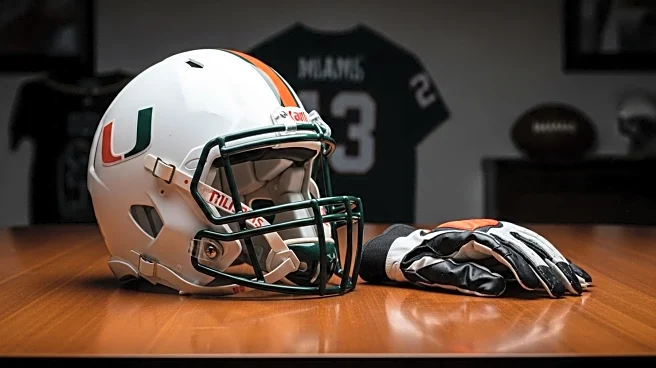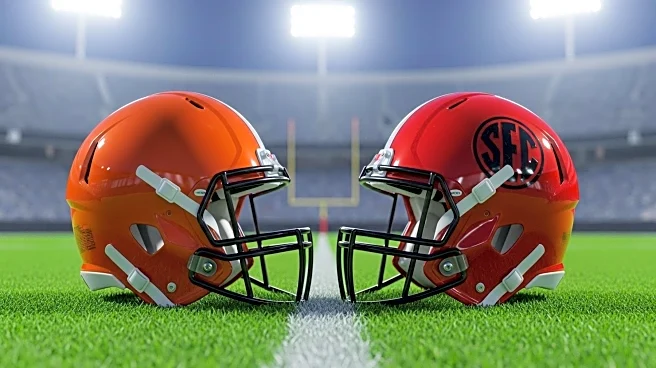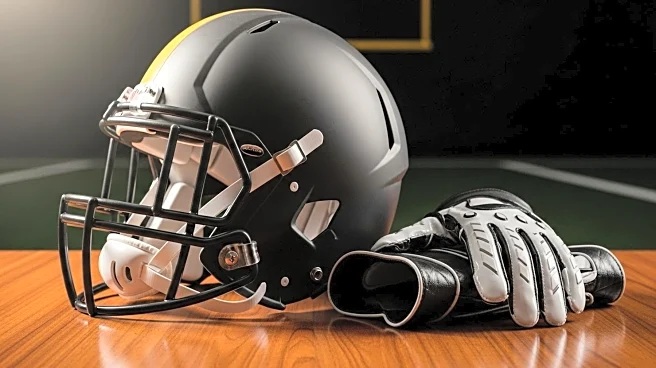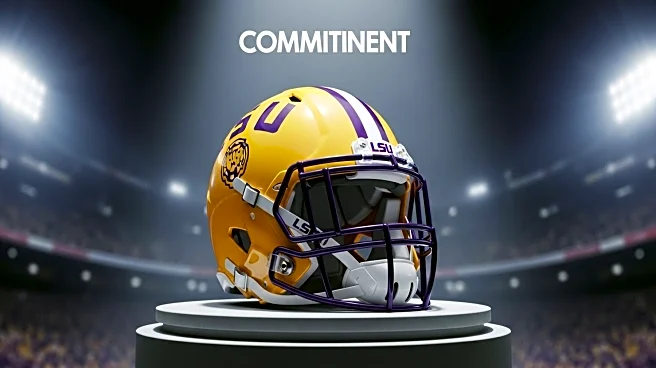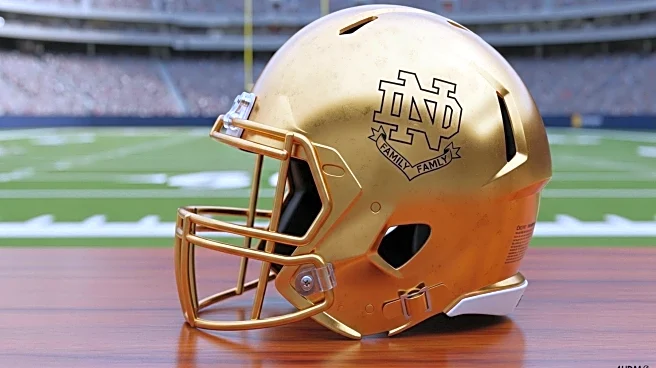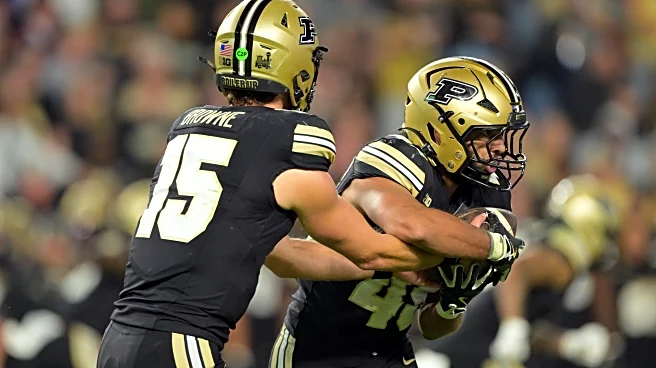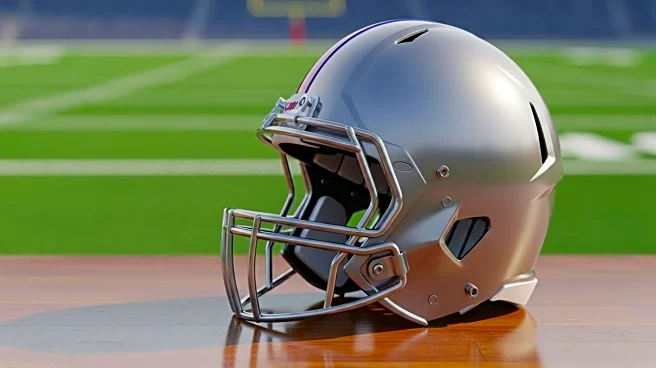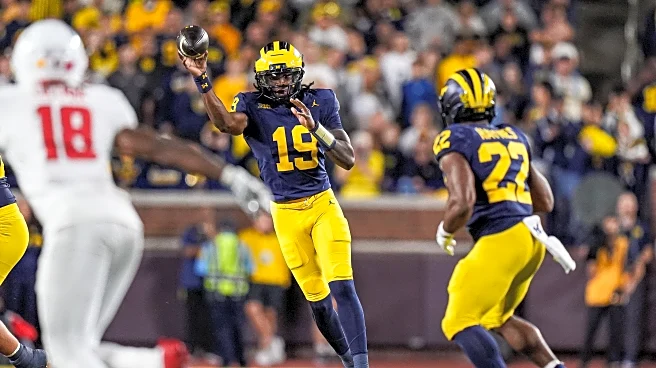What's Happening?
Ja'Kobi Lane, a junior wide receiver at the University of Southern California (USC), has become a notable figure in college football following a standout performance in Week 2 of the 2025 season. Despite only recording three catches for 91 yards and a touchdown, one of Lane's catches against Georgia Southern has captured significant attention, elevating his profile in the sport. This performance has sparked discussions about Lane and his teammate Makhi Lemon potentially being the best receiving duo in college football. However, despite his rising fame and impressive statistics from the previous season, Lane remains without a trading card, a common accolade for standout players. His 2024 season included an 84.9 PFF grade, 12 contested catches, and six touchdowns, yet collectors are still waiting for his first trading card.
Why It's Important?
The absence of a trading card for Ja'Kobi Lane highlights a unique situation in the sports collectibles market, where typically, standout athletes quickly become part of trading card collections. Lane's growing reputation without this traditional form of recognition underscores a shift in how athletes can gain fame and influence. This situation also reflects broader trends in college sports, where athletes are increasingly focusing on their development and future professional prospects over immediate financial gains from Name, Image, and Likeness (NIL) deals. Lane's focus on his development and potential NFL career rather than NIL opportunities suggests a prioritization of long-term career goals over short-term financial incentives.
What's Next?
As Ja'Kobi Lane continues to perform on the field, it is likely that trading card companies will eventually capitalize on his growing popularity. The demand from collectors and fans for Lane's trading card is expected to increase, potentially leading to its release in the near future. Meanwhile, Lane's focus remains on his performance and development, aiming for a successful transition to the NFL. This approach may influence other college athletes to prioritize their athletic development over immediate financial opportunities, potentially impacting the dynamics of college sports and the NIL landscape.
